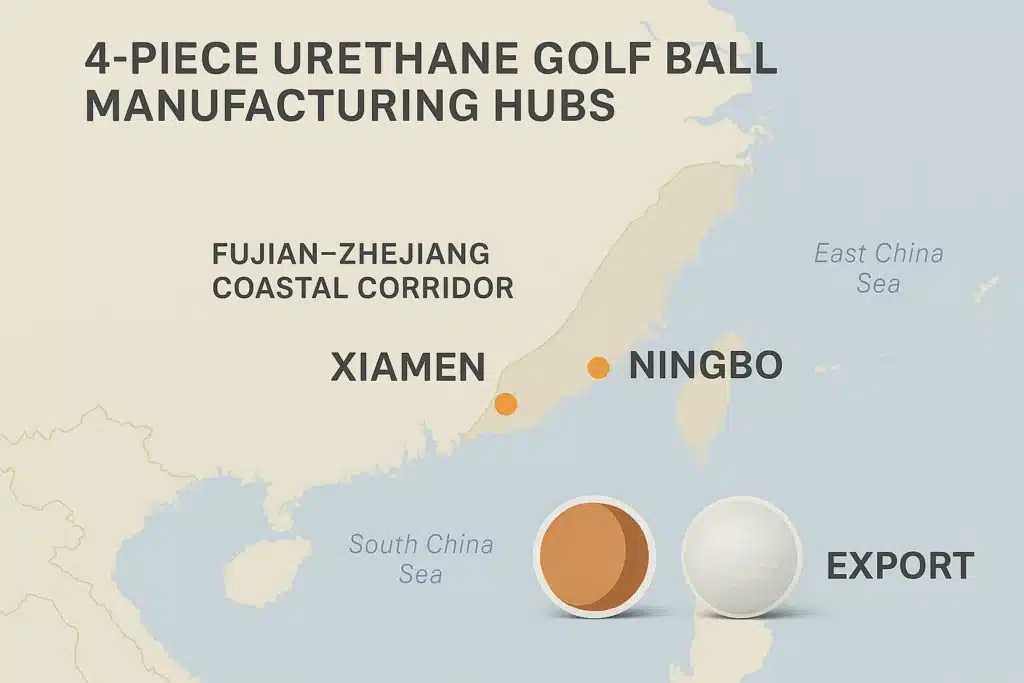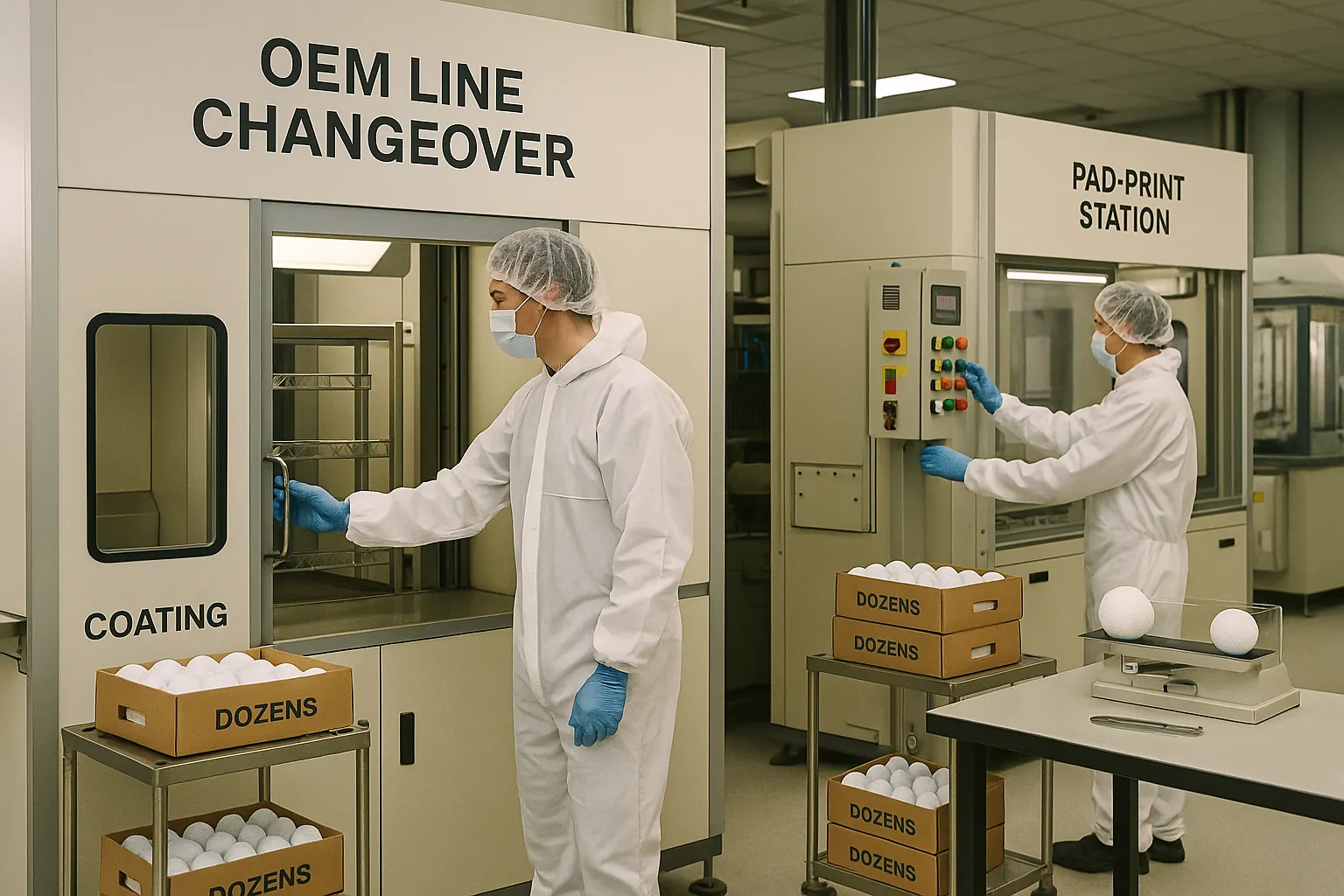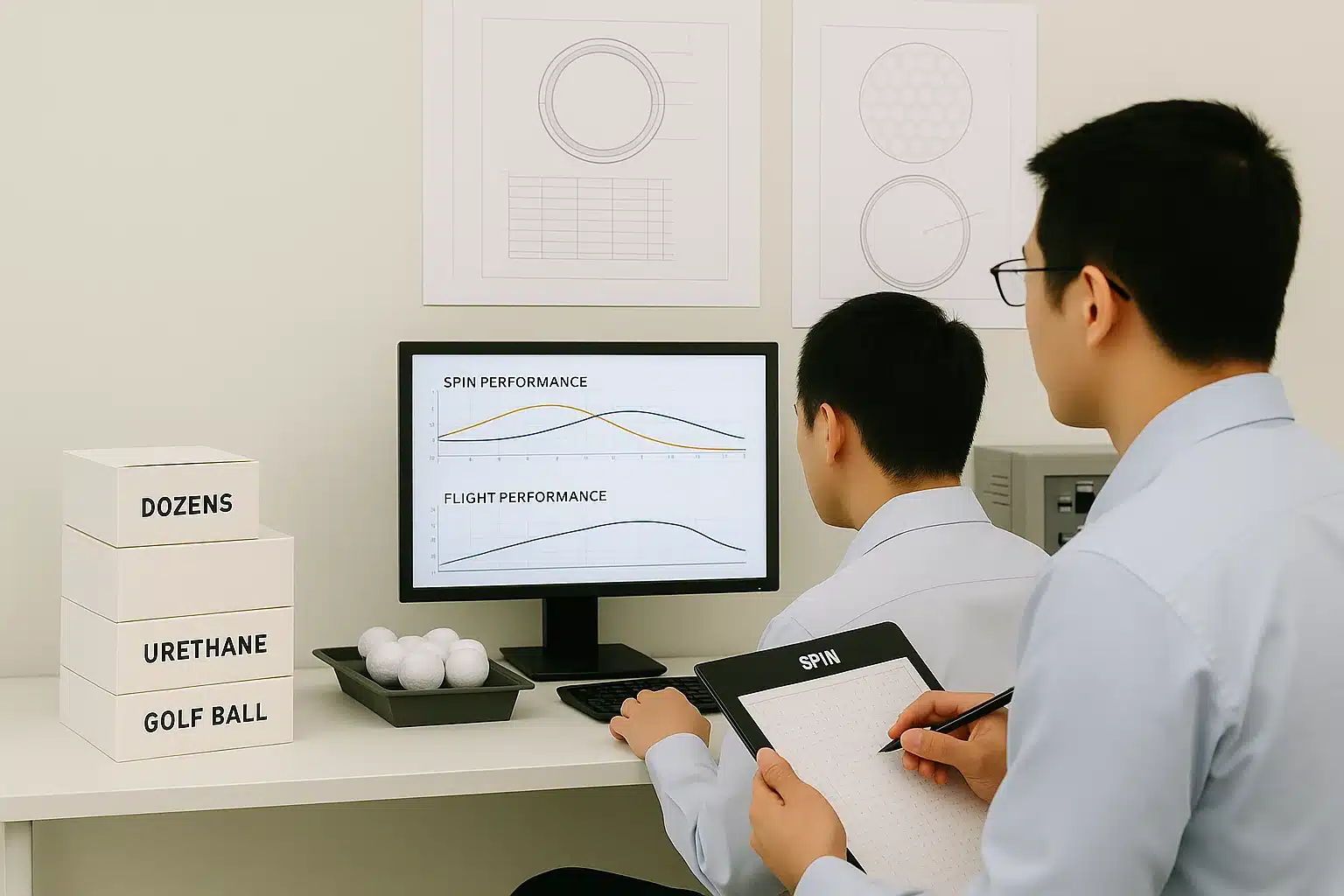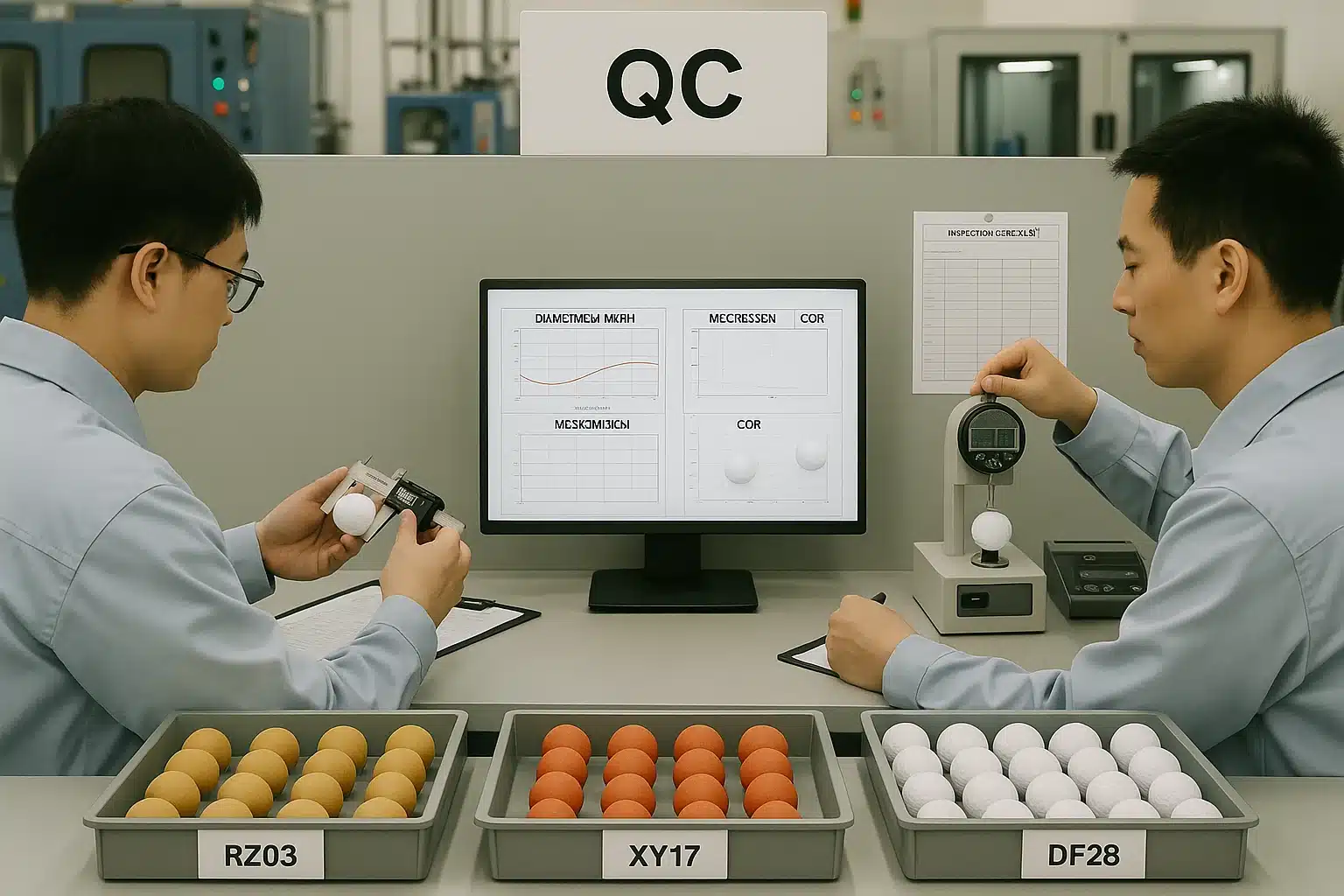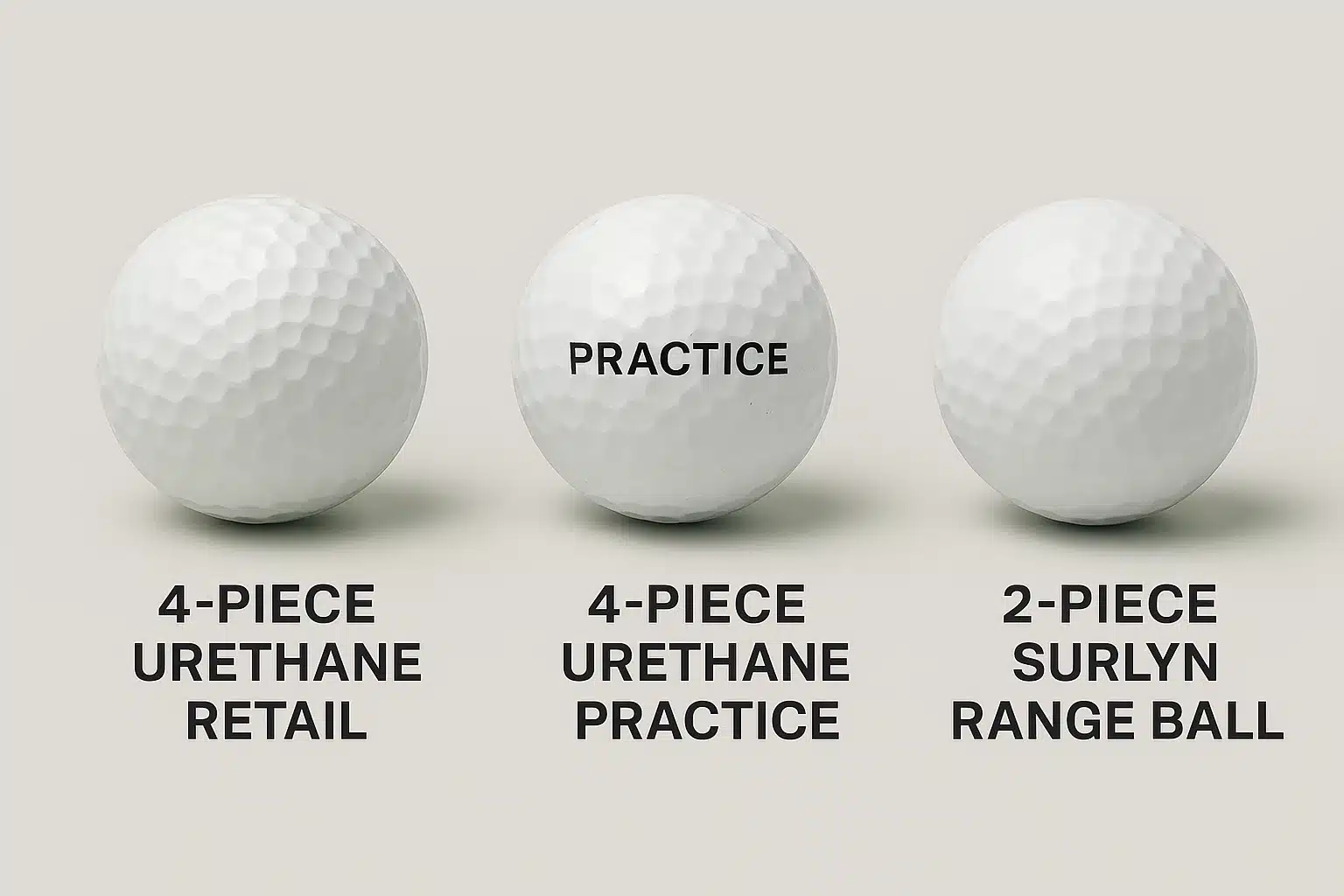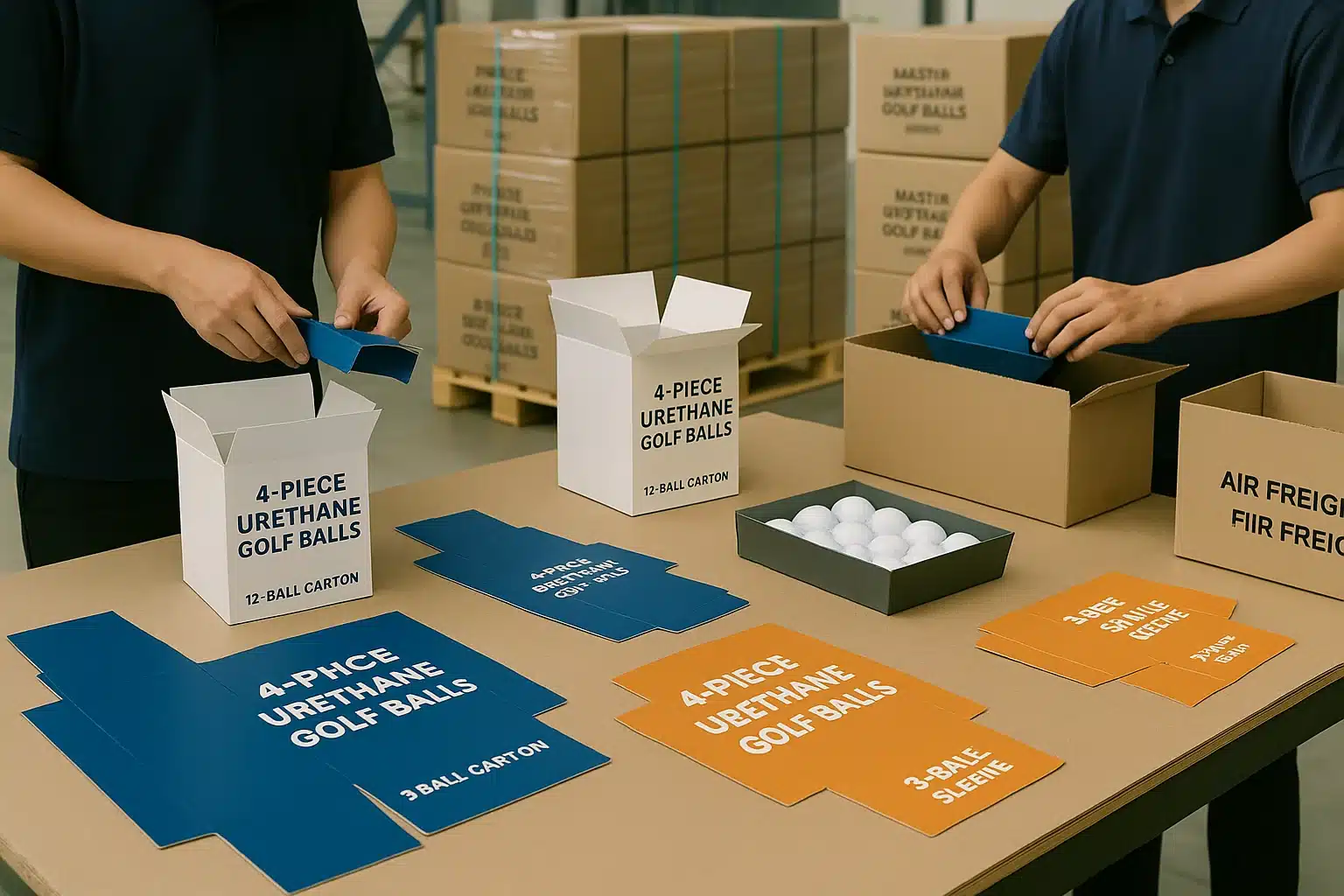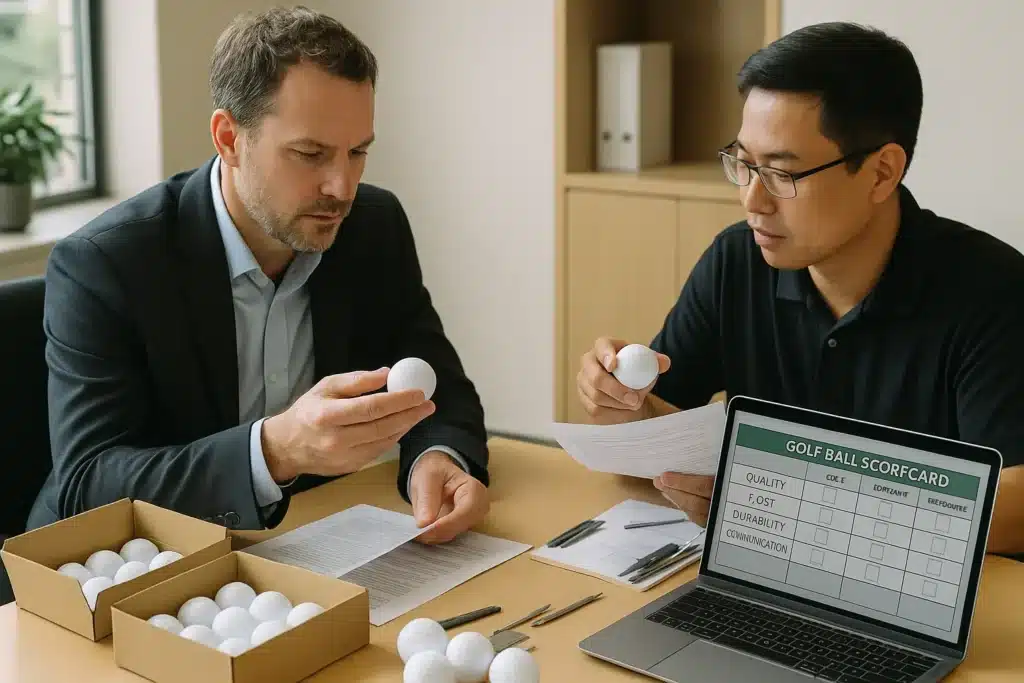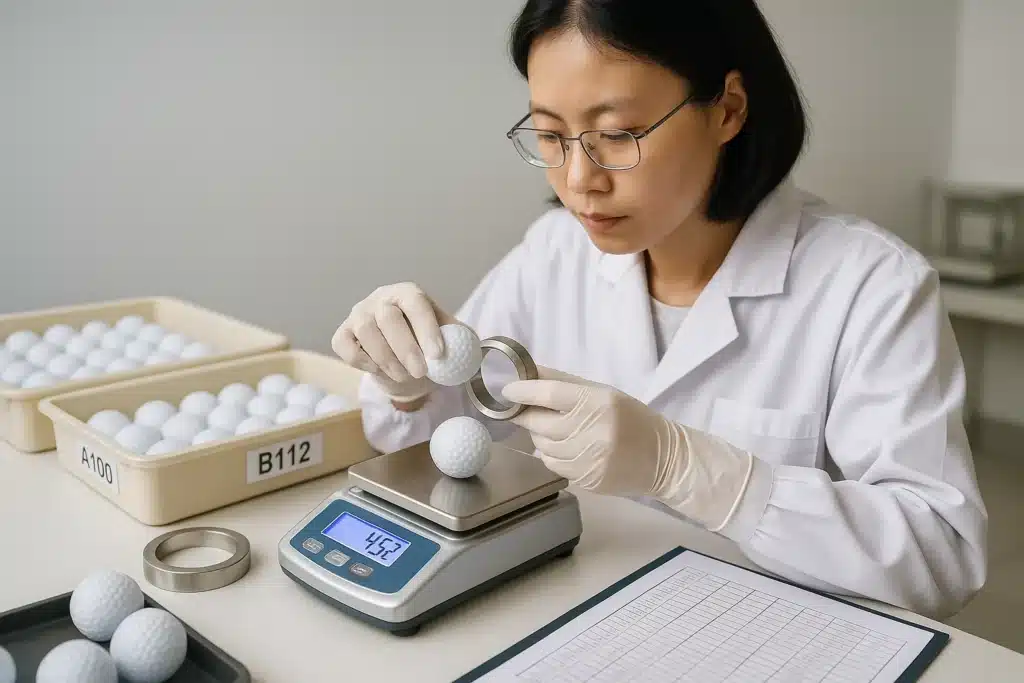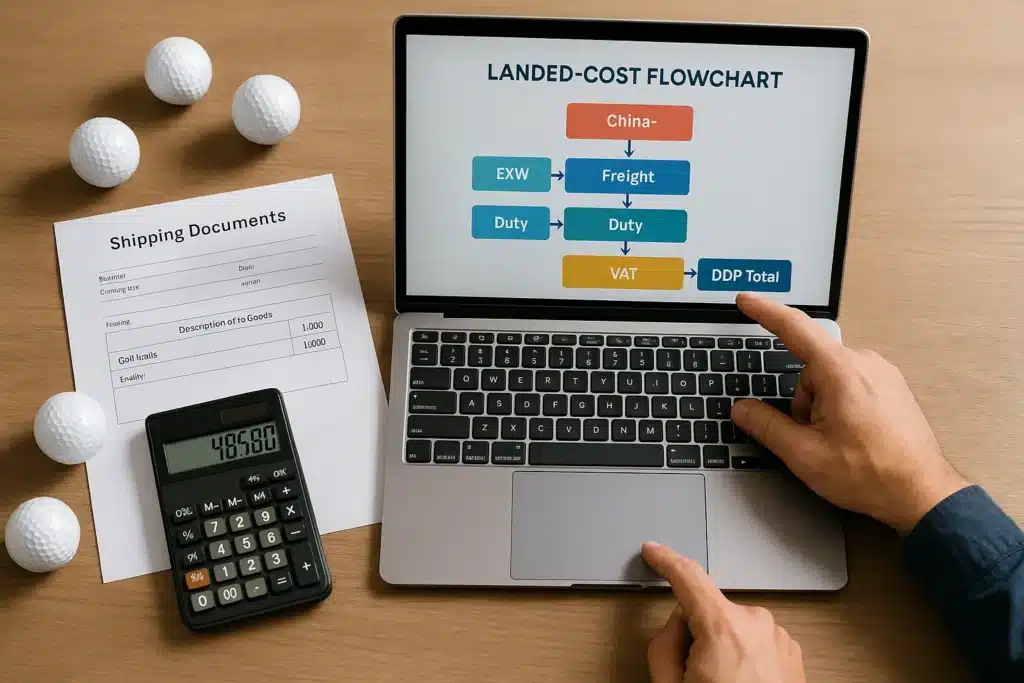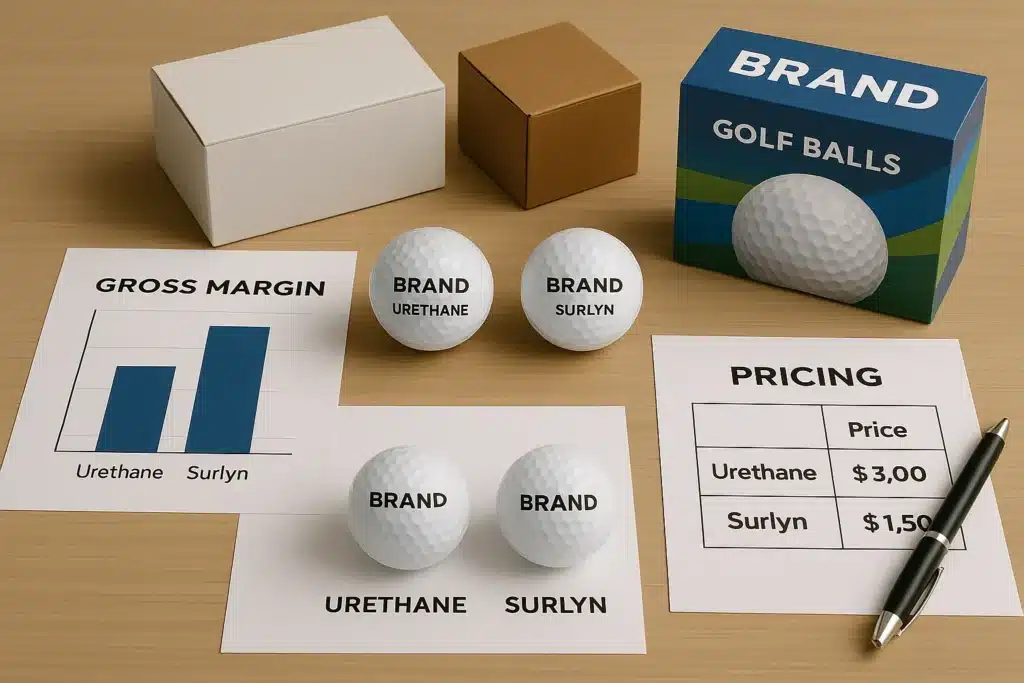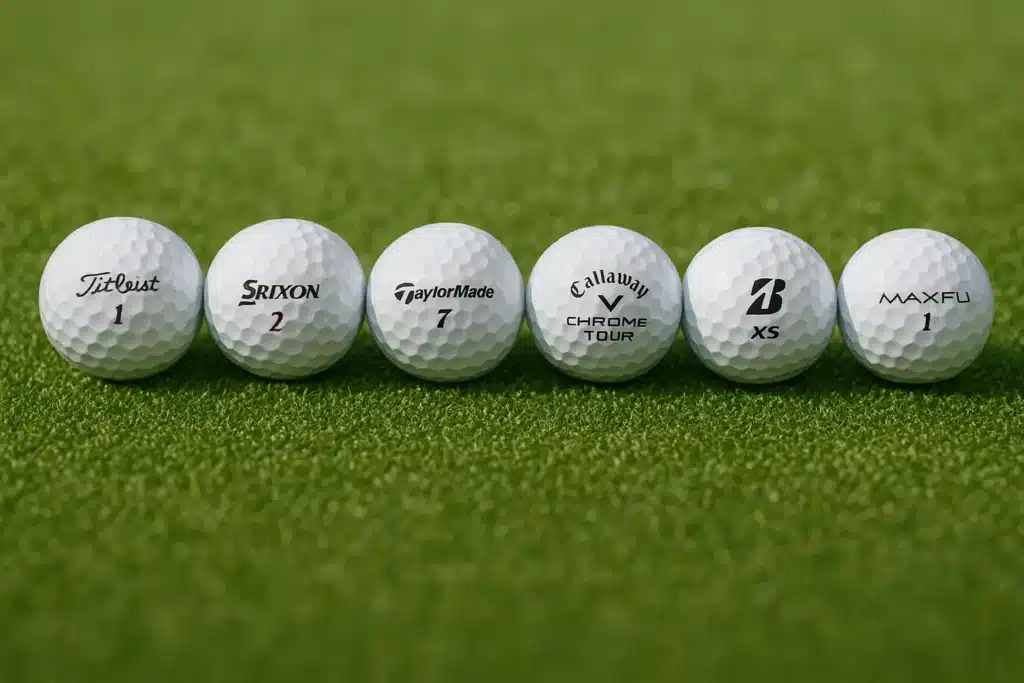Top China sources for 4-piece urethane golf balls (cast urethane, USGA-conforming): Xiamen MLG (~2,000 MOQ), Ningbo Golfara (1,000–2,000), Ningbo Yihong (3,000+), and Xiamen Yopral (1,000–3,000). Typical timelines: samples 7–12 days; mass production 15–35 days.
Which Chinese factories make 4-piece urethane golf balls?
China’s 4-piece urethane golf ball manufacturing is led by Xiamen and Ningbo within the Fujian–Zhejiang coastal corridor; best-fit OEMs for small-to-mid MOQs are Xiamen MLG (~2,000), Ningbo Golfara (1,000–2,000), Ningbo Yihong (3,000+), and Xiamen Yopral (1,000–3,000). Samples 7–12 days; mass production 15–35 days.
| Factories Shortlist | Manufacturer | Main product types | Typical MOQ | Best for |
|---|---|---|---|---|
| Ningbo Golfara | 2/3/4-piece; cast urethane; custom colors/logos | 1,000–2,000 | 15–20 days | Small-MOQ premium, pilot runs |
| Xiamen MLG | 2/3/4/5-piece; urethane/Surlyn | ~2,000 | 20–35 days | Mid-volume with tight schedule |
| Ningbo Yihong | 2/3/4-piece; cast urethane or TPU (confirm per SKU) | 3,000+ | 15–30 days | Price-tiered premium lines |
| Xiamen Yopral | 2/3/4-piece; urethane cover | 1,000–3,000 | 15–25 days | Event balls, white-label premium |
✔ True — Finishing (coatings/printing/packaging) drives both price and schedule
The same core/mantle build can add $0.05–0.15 per ball and 5–10 working days if you specify double coats, UV, multi-color pad printing, or gift boxes.
✘ False — “Core design is the only determinant of cost and lead time”
Bottlenecks are typically paint/print lanes and kitting, not molding.
Why pick a 4-piece urethane model?
A 4-piece urethane golf ball decouples driver speed (core + inner mantle) from wedge spin (outer mantle + urethane cover), yielding higher launch stability and stronger greenside control for mid-to-high swing speeds; it positions against tour-class lines like Titleist Pro V1x and TaylorMade TP5x intent class.
Who benefits most from 4-piece urethane—and when does 3-piece win?
Choose a 4-piece urethane for tournament SKUs, players chasing consistent stopping power, and premium retail lines; pick 3-piece urethane for broader audience coverage at lower cost and softer overall feel.
-
4-piece: higher speed ceiling, tighter wind stability, stronger wedge bite.
-
3-piece: all-rounder feel, friendly price, easier compression matching for mid-speed players.
3-piece vs 4-piece urethane — materials, process, performance, use cases
A 4-piece adds an outer mantle to decouple low driver spin from high wedge spin, raising greenside control and wind stability versus 3-piece at a higher unit cost.
| Dimension | 3-piece urethane | 4-piece urethane |
|---|---|---|
| Typical structure | PB core + single mantle + urethane cover (cast or TPU) | PB core + inner mantle (speed) + outer mantle (spin/flight) + urethane cover |
| Cover route | Cast urethane common; some TPU | High-end is almost always cast; small share TPU |
| Tuning freedom | Medium (mantle + cover thickness/hardness) | High (dual mantles decouple driver low-spin vs wedge high-spin) |
| Feel & spin | Soft feel; strong vs Surlyn; all-rounder | Strongest greenside spin; faster stopping |
| Ball speed & flight | Mid-high speed; neutral trajectory | Higher speed ceiling; higher peak; better wind stability |
| Cost | Lower | Higher (extra mantle, tighter concentricity control) |
| Primary users | Moderate swing speeds | Mid-to-high swing speeds; tournament play |
| Typical uses | Retail, amateur tournaments, club balls | High-end retail, events, tour-style; Practice/X-Out for training |
✔ True — Extra mantle and tighter concentricity make 4-piece cadence slower
Expect slightly longer cycles and more disciplined scrap management versus 3-piece due to dual mantles and stricter thickness tolerances across the urethane cover.
✘ False — “Layer count doesn’t affect schedule”
Layering precision directly impacts throughput and rework rates in any 4-piece urethane production line.
How is a 4-piece urethane ball built and controlled?
The buyer-visible stack is PB core → inner mantle (speed) → outer mantle (spin/trajectory) → urethane cover (usually cast), then finishing (paint/print) and full cosmetic inspection; control depends on CT/COR, compression, roundness, and cover uniformity.
Essential build stages and checkpoints
Compound the PB core and vulcanize; measure compression and COR; wrap inner then outer mantles; form the cover via cast urethane or TPU; then de-flash, polish, coat, print, and cure—verifying metrics pre- and post-paint.
-
Pre-paint QC: weight, diameter, roundness, CT, COR, compression.
-
Post-paint QC: 100% appearance check + AQL; traceability by mold/dimple codes.
-
Traceability: retain samples per lot; record dimple-mold IDs and coating stacks.
✔ True — What makes a factory audit truly meaningful
A proper audit includes on-site process review, past defect data, capacity verification, and social compliance checks. It improves predictions on delivery reliability and quality stability.
✘ False — “As long as they passed one audit, they’re good”
A one-time pass doesn’t guarantee ongoing standards; continuous control and follow-ups matter.
What do “Practice” and “X-Out” labels actually mean?
Practice-marked/X-Out units are the same 4-piece urethane construction with cosmetic blemishes—not range-ball builds; use them for value training while preserving tour-level construction and performance.
Categorize the three families clearly
Separate three categories: Practice-marked/X-Out, conforming retail/play balls, and true range balls; only the first two share 4-piece urethane construction—range balls are usually 1–2 piece Surlyn with different durability goals.
-
Practice-marked/X-Out: minor paint/print blemishes; conforming performance.
-
Retail/play balls: full-grade finish; marketed SKUs.
-
Range balls: 1–2 piece Surlyn; built for abuse and low cost, not greenside spin.
Channel guidance for accurate messaging
Reserve 4-piece urethane builds for retail and tournament lines; offer Practice-marked/X-Out for consumer training value; supply ranges and academies with 2-piece Surlyn to protect budgets and ball life.
✔ True — “Practice-marked” is cosmetic grading, not different construction
Performance remains conforming; stamps typically indicate minor aesthetic issues and discounted pricing for the same 4-piece urethane build.
✘ False — “Practice-stamped equals range-ball spec”
Range balls are built for durability and low cost; they are almost always Surlyn and fewer layers.
Cast urethane vs TPU for 4-piece urethane golf balls
Choose cast urethane for tour-grade greenside spin and feel; consider TPU when cycle time and cost are priorities—validate with like-for-like A/B builds at your target compression.
Core trade-offs: cast urethane vs TPU
Cast urethane (thermoset) typically delivers higher wedge bite and softer feel; TPU (thermoplastic) accelerates cycles and can simplify color shells; pick by SKU intent: flagship tournament vs budget-sensitive quick turns.
| Criterion | Cast urethane (thermoset) | TPU (thermoplastic) |
|---|---|---|
| Greenside spin/“grab” | Highest; tour-class feel | Slightly lower bite |
| Cycle time | Slower (mix, cast, cure) | Faster (injection/press) |
| Durability vs wedges | Excellent; softer feel | Very good; different scuff pattern |
| Color shells | Standard white; planned colors | Color shells easier at scale |
| Best use | Flagship/tournament lines | Budget/time-driven runs |
Validate a TPU alternative without surprises
Run a controlled A/B in which cores and mantles are identical and only the cover route changes; measure wedge spin, abrasion, CT/COR parity, thickness mapping/Cpk, and collect blind-panel feedback at your target compression.
✔ True — Most premium 4-piece offerings default to cast urethane
If greenside spin and feel are non-negotiable, cast remains the safe default; TPU is a pragmatic alternative for cycle-time and cost gains.
✘ False — “TPU equals cast across every performance metric”
Expect subtle but real differences in wedge interactions; verify via controlled builds.
Quality metrics & acceptance criteria
Set USGA/R&A size and weight windows in the PO and require histograms for CT/COR and compression; define cosmetic AQL by defect class to avoid disputes and rework.
Acceptance matrix
| Metric | Method | Target window | Notes |
|---|---|---|---|
| Diameter | Caliper/gauge | ≥ 42.67 mm | USGA conforming |
| Weight | Scale | ≤ 45.93 g | USGA conforming |
| Roundness | Roundness gauge | Tolerance & Cpk | Concentricity focus |
| Compression | Compression gauge | Model-specific range | Align gauges with supplier |
| CT/COR | CT rig/COR test | Buyer targets (driver) | Include histograms |
| Wedge spin | Robot/fixture test | Delta by build | Keep cores/mantles constant |
| Cosmetics | Visual/AQL | AQL plan by class | Mis-reg, orange peel, dust nibs |
Packaging options
Fold-flat 3-ball sleeves and 12-ball cartons minimize CBM for air/express while preserving retail readiness; tubes/blisters increase CBM and should be reserved for niche visual displays.
Packaging & CBM effects (choose by lane and budget)
| Option | Retail readiness | CBM effect | Pros | Cons | Best for |
|---|---|---|---|---|---|
| Fold-flat sleeves + 12-ball carton | High after assembly | Low | Lowest air cost; flexible storage | Some destination assembly | Air/express, small MOQs |
| Pre-assembled sleeves/cartons | Immediate | Medium | Faster fulfillment | Higher CBM | Sea freight, larger runs |
| Tubes/blisters | Niche | High | Visual impact | Poor CBM; costly by air | Specialty retail only |
| Gift boxes (inserts) | Premium | Medium–High | Brand value | Kitting time and cost | Events/premium sets |
Logistics tips to cut freight:
-
Model dimensional weight before locking packaging.
-
Avoid tubes/blisters for air; compress void space in master cartons.
-
Split-ship: balls first, gift sets later, when timelines diverge.
-
Confirm pallet plan (sets per carton; cartons per pallet) for sea freight.
✔ True — Model landed cost per dozen including CBM and air-lane realities
Freight is volume-driven. Tubes/blisters inflate CBM and can outweigh material savings; fold-flat sleeves/dozens compress volume for air/express. Compare sea vs air and lock the format only after a total landed-cost simulation.
✘ False — “Lowest EXW unit price wins regardless of freight”
Ignoring CBM and dimensional weight creates budget overruns. Volume, not grams, usually decides your real cost.
FAQs
Can a 4-piece urethane be used as a range ball?
No. A 4-piece urethane golf ball is a competition-grade construction and too costly for range abuse; supply ranges with 1–2 piece Surlyn. Practice-marked/X-Out 4-piece units are fine for personal training but not range buckets.
Repeated wedge strikes and mat hits create a different wear pattern from real play. Protect budgets and ball life: use Surlyn for ranges; keep urethane for play or personal practice.
Is TPU “worse” than cast urethane?
It’s a trade-off, not a downgrade. TPU can shorten cycles and reduce cost, but cast urethane typically wins on groove-grab and feel. Validate TPU via controlled A/Bs keeping cores and mantles constant.
If your SKU targets premium retail or tournament play, cast urethane remains the safer default for flagship 4-piece urethane golf ball SKUs. TPU helps for cost-sensitive or quick-turn projects; confirm wedge-spin, abrasion, and cover-thickness Cpk before locking.
What delays shipments most?
Finishing lines and kitting, especially in Q2–Q3 peaks. Pre-approve coating stacks, consolidate pad-print colors, and confirm gift-box capacity—or ship balls first and kits later.
Molding is rarely the bottleneck. Your timeline is set by paint booths, print fixtures, and pack-out speed. A small up-front alignment often saves a week downstream.
What are typical MOQs and timelines?
MOQs commonly range 1,000–3,000; samples take 7–12 days; mass production runs 15–35 days for a 4-piece urethane program depending on finishing lanes and packaging decisions.
Targets hold if SKUs stay on standard whites and 332 tools. Neon shells, multi-color prints, or UV coats push you to the high end of the window. Lock art and Pantones early.
How do we reduce airfreight on small drops?
Use fold-flat sleeves, minimize void space in master cartons, and split-ship if gift boxes aren’t critical to first-delivery; always model dimensional weight before finalizing packaging.
A simple CBM model often finds 8–15% savings without any compromise on consumer-facing quality.
Key takeaway
China’s 4-piece urethane OEMs—MLG, Golfara, Yihong, and Yopral—can deliver tour-level builds at small-to-mid MOQs if you lock cover route, compression targets, finishing specs, and packaging early; plan on 7–12 day samples and 15–35 day mass production to hit retail windows confidently.
You might also like — Top 3-Piece Urethane Golf Ball Manufacturers in China (2025)

